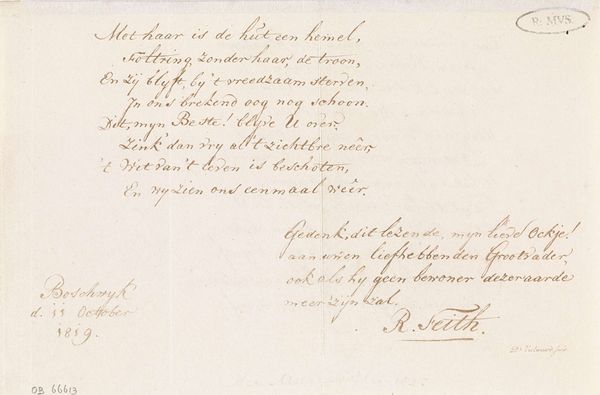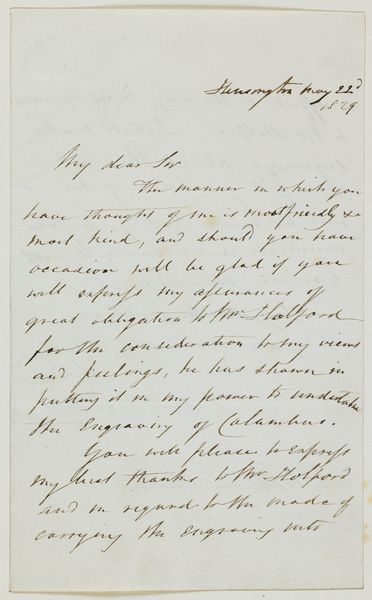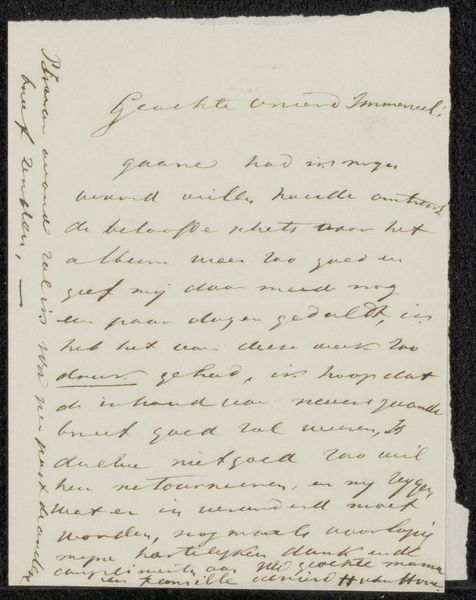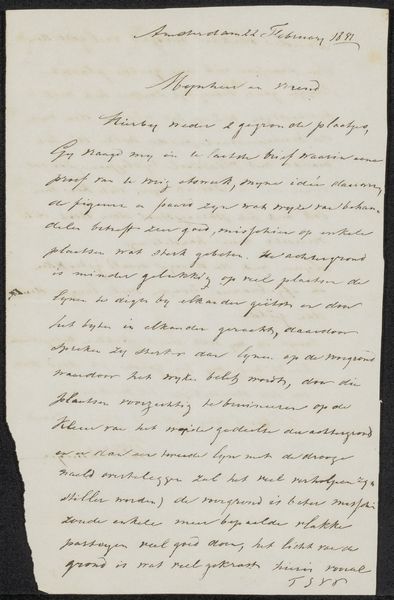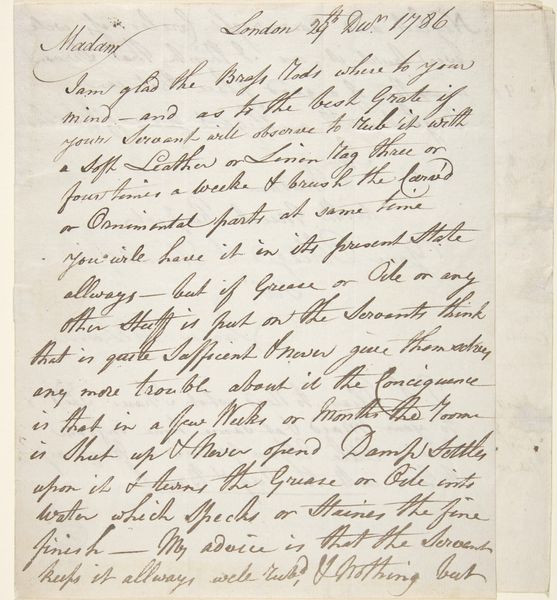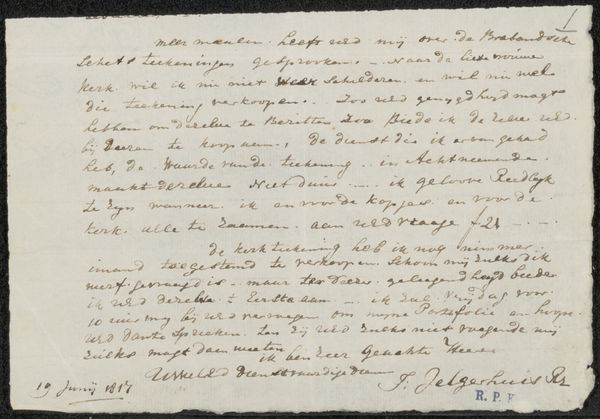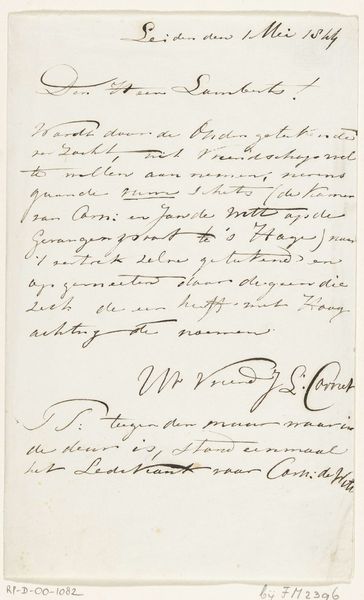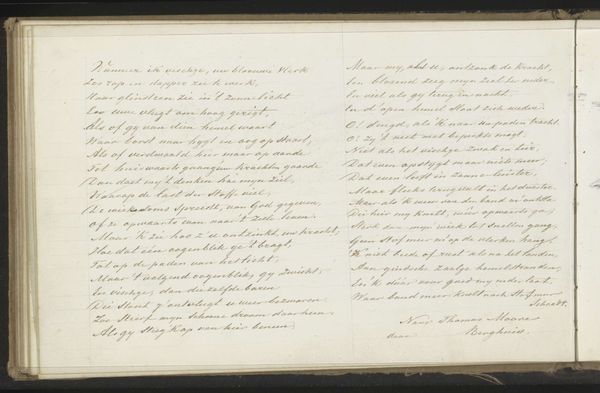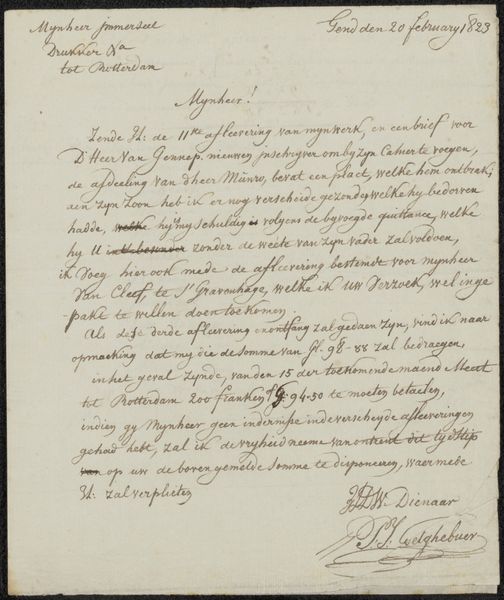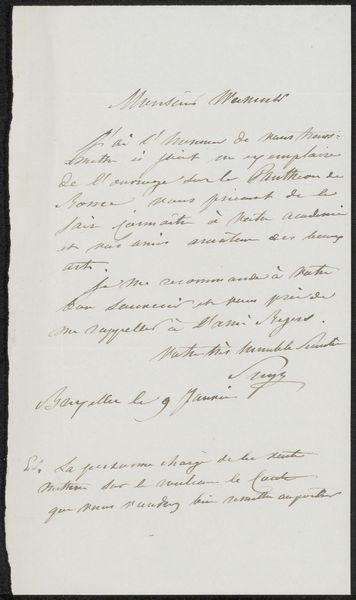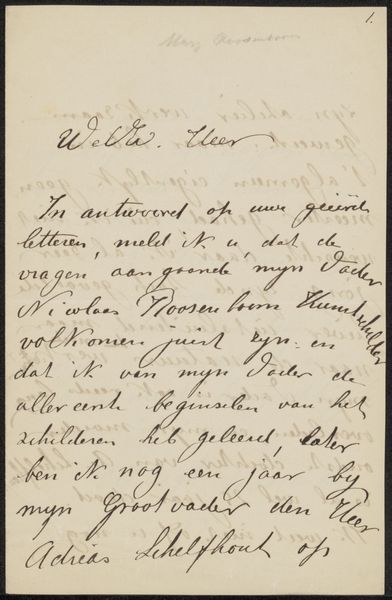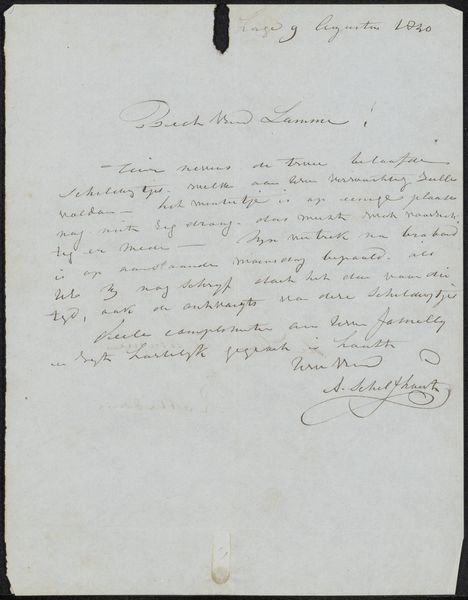
drawing, paper, ink, pen
#
portrait
#
drawing
#
hand written
#
hand-lettering
#
lettering
#
hand drawn type
#
hand lettering
#
paper
#
ink
#
hand-written
#
hand-drawn typeface
#
fading type
#
romanticism
#
pen
#
handwritten font
#
small lettering
Dimensions: height 109 mm, width 142 mm
Copyright: Rijks Museum: Open Domain
Curator: Ah, here we have a "Letter by Rhijnvis Feith B," made between 1791 and 1851 by Daniël (I) Veelwaard, currently residing at the Rijksmuseum. It whispers of secrets long past, doesn't it? Editor: It really does! The script is just beautiful; it feels so intimate. What I am wondering is: How do you even begin to unpack a piece like this, something so personal and steeped in history? Curator: With a gentle curiosity, my friend, a willingness to be led. This isn’t just any handwriting; it’s a dance of ink across paper, a portrait of the soul in every loop and flourish. It sings of Romanticism, that yearning for something beyond the mundane, for connection with God. Does the religious sentiment leap out at you as well? Editor: It does, actually. The constant mentioning of God, blood and virtues seem very dramatic. Is that something typical of Romanticism, to mix religion with grand emotions? Curator: Precisely! Think of dramatic landscapes mirroring the soul's turbulent depths. Here, the letter becomes the landscape. Veelwaard's hand channels Feith's faith, offering moral advice and the comfort of divine love. Look closer: is the consistency of the line the same throughout the drawing? Is every character fully present, dark, clear? Editor: Now that you mention it, no. Some lines are faded and much thinner than others, and I feel as though, especially toward the end of the paper, I begin seeing faint sketch lines or adjustments around some of the letters. Almost as if the writer made corrections. It feels a bit... vulnerable, or human, to leave such minor imperfections for everyone to see, right? Curator: Yes! Even unintentional or circumstantial evidence of such sort are essential parts of our comprehension of art, precisely due to how it shows something to us through subtle means that no textual source or historical archive ever could. So tell me, how would you describe your perspective on this artwork, now? Editor: It went from feeling like a mysterious historical document to a heartfelt message from a person to someone else they care for. Maybe it is the moral advice and vulnerability in the final imperfect product that brings that feeling! Thank you so much for all these explanations! Curator: And thank *you* for sharing the gift of your perspective. Art thrives in the space between object and observer.
Comments
No comments
Be the first to comment and join the conversation on the ultimate creative platform.
